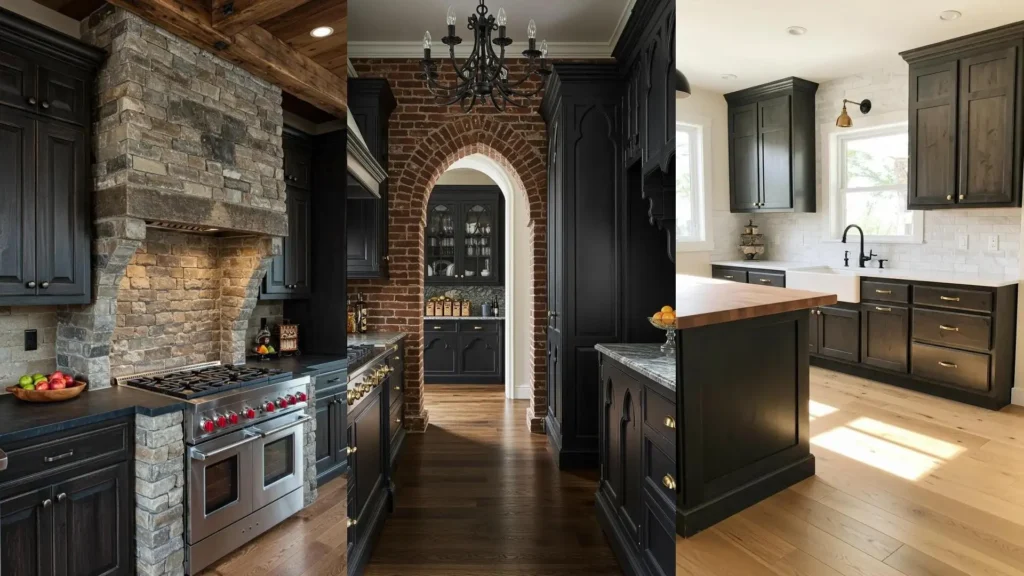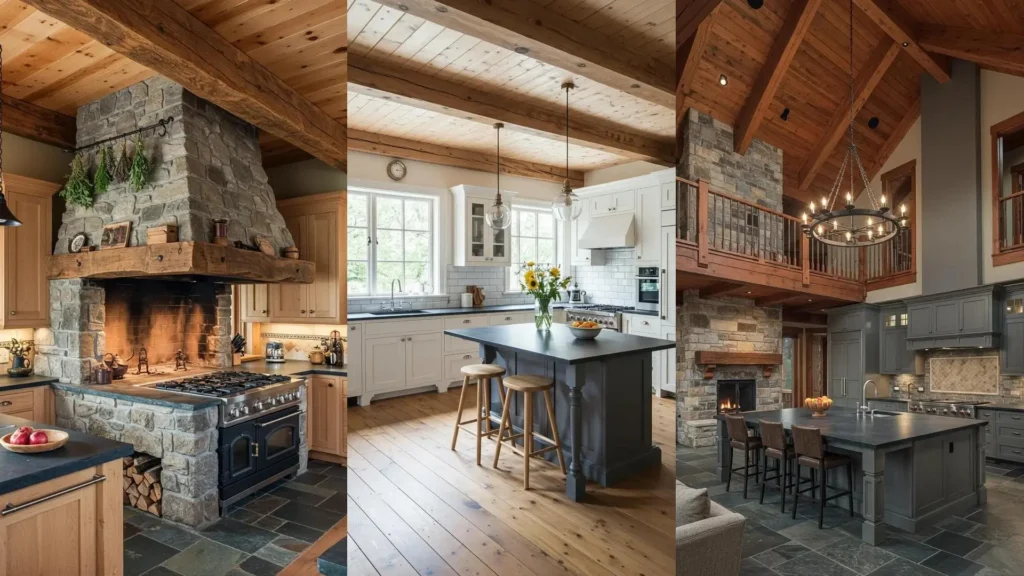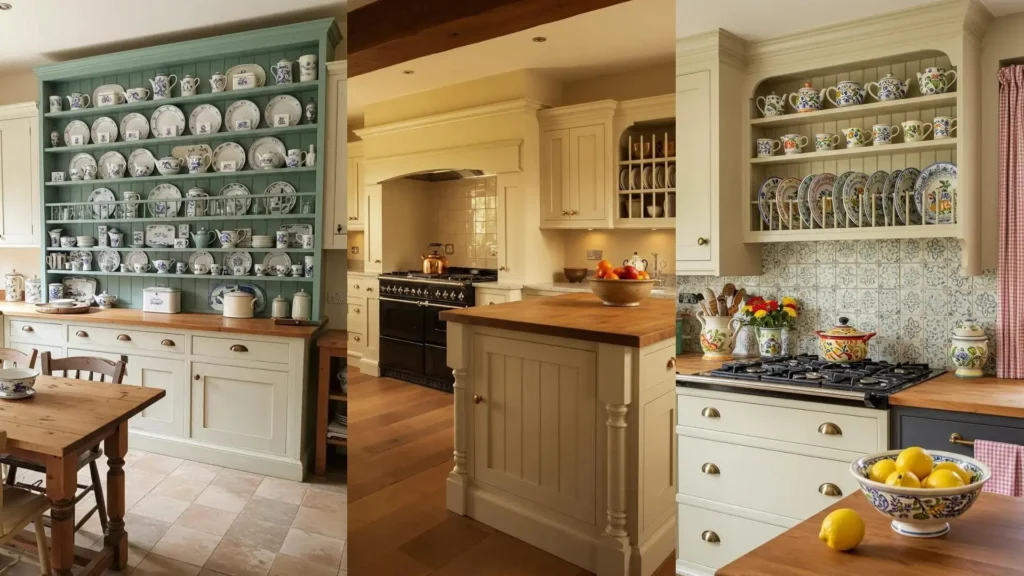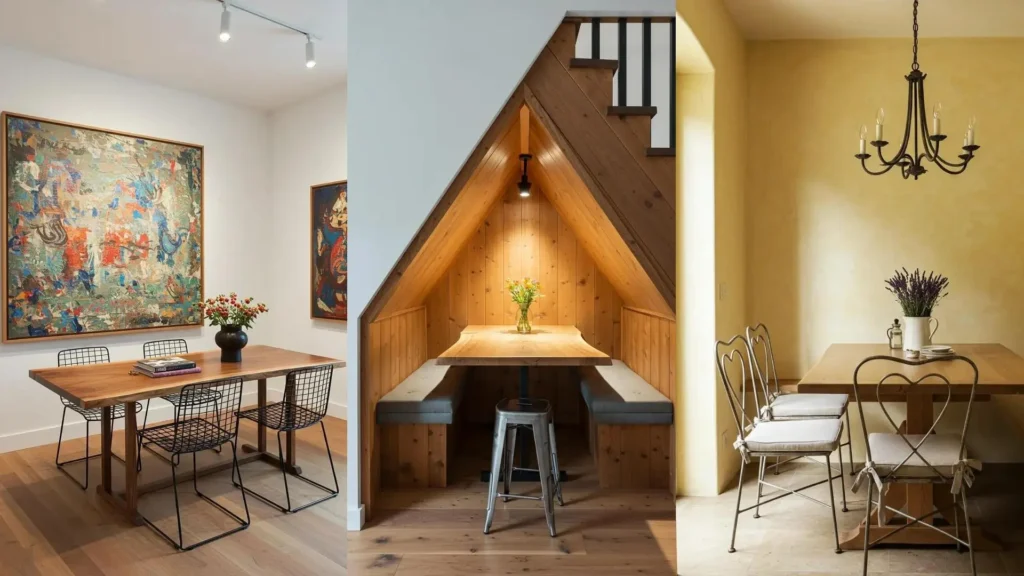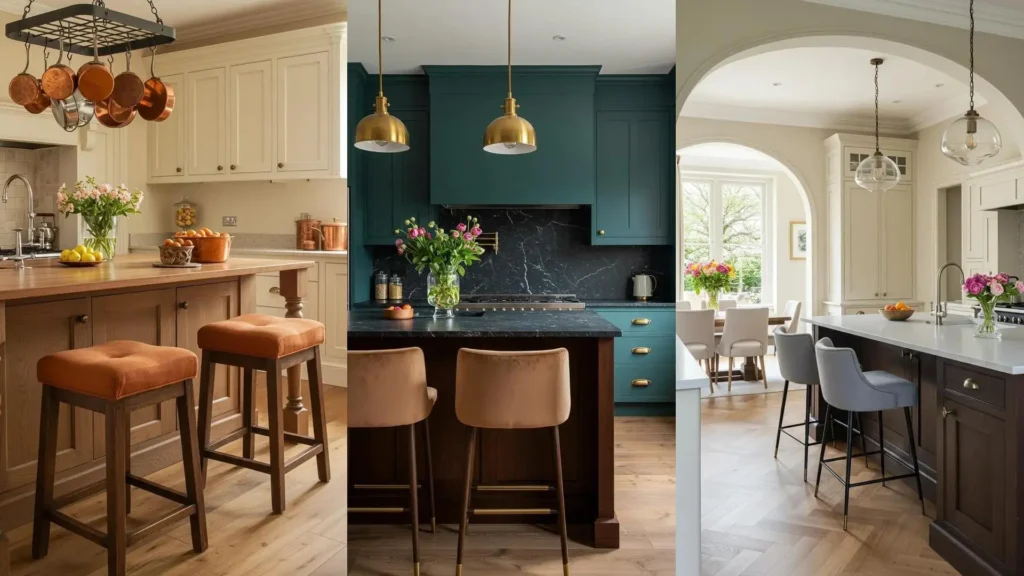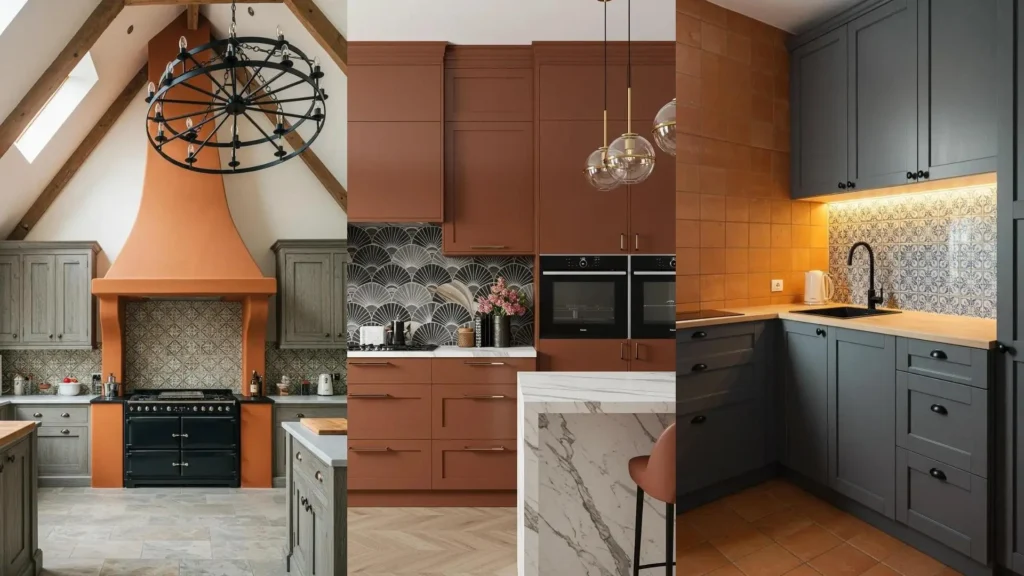There is a captivating power in the combination of rugged brick, deep ebony, and the warm glint of brass.
It’s a palette that feels at once historic and modern, industrial and refined.
But bringing these strong personalities together in your own kitchen requires a thoughtful touch to ensure the result is a harmonious, soulful space—not a clash of materials.
Here, we explore how to balance texture, light, and proportion to create a kitchen that is not just a backdrop for your life, but a true reflection of your sophisticated taste.
1. Balance Industrial Scale with Human Touch
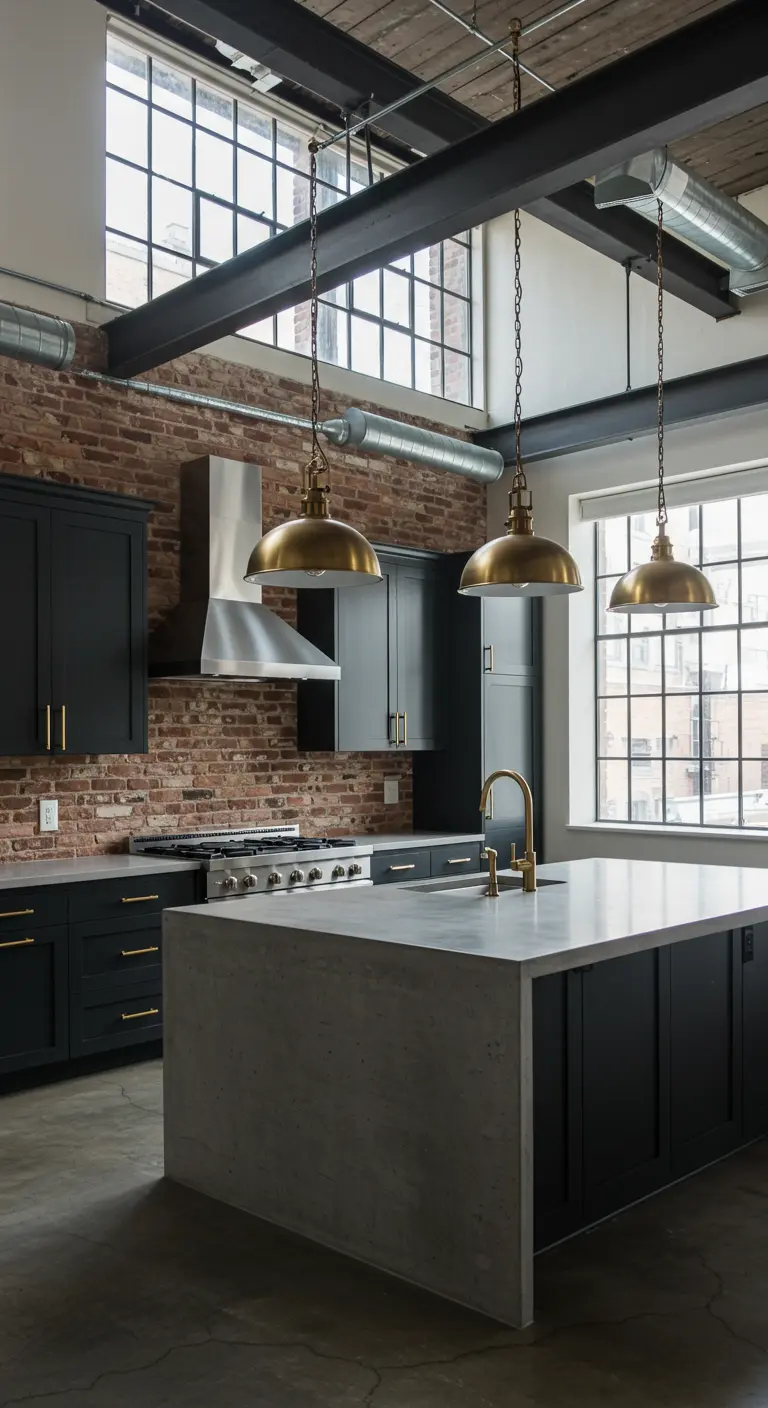
In a kitchen with high ceilings and exposed structural elements, use lighting to ground the space.
These large brass dome pendants draw the eye downward, creating a more intimate feel over the island and connecting visually with the hardware below.
If you don’t have high ceilings, you can achieve a similar effect by choosing pendants that are substantial in scale but hung at the correct height—about 30-36 inches above your countertop.
The concrete waterfall island adds a cool, modern texture that contrasts beautifully with the warm, historic brick.
2. Soften the Look with Painted Brick
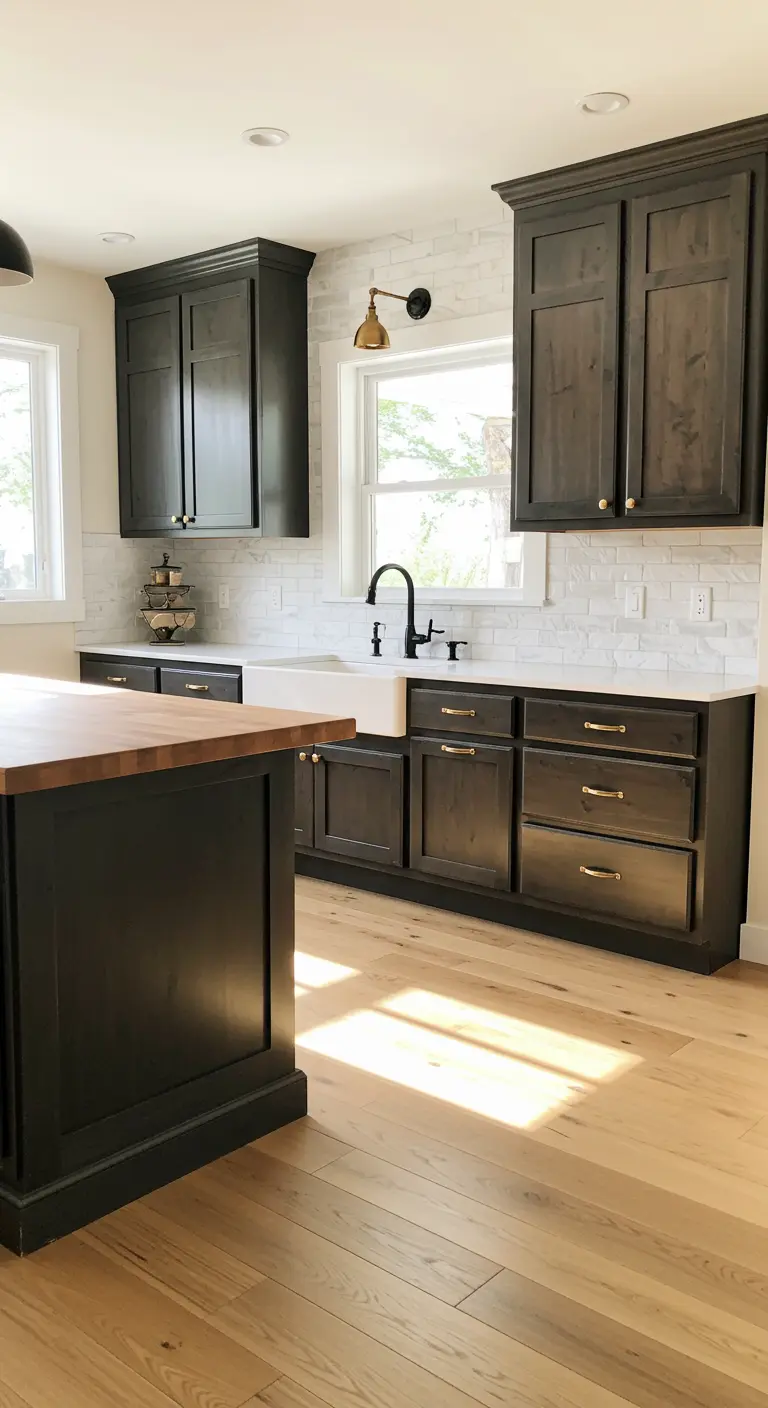
If you love the texture of brick but want a brighter, airier feel, consider painting it.
A whitewashed or painted brick backsplash offers the same rustic character as raw brick but with a softer, more modern farmhouse appeal.
It pairs beautifully with stained ebony cabinets, where the wood grain is still visible, adding another layer of natural texture.
A butcher block countertop on the island introduces warmth and is a practical, durable surface that complements this farmhouse aesthetic perfectly.
3. Introduce Glamour Through Stone and Crystal
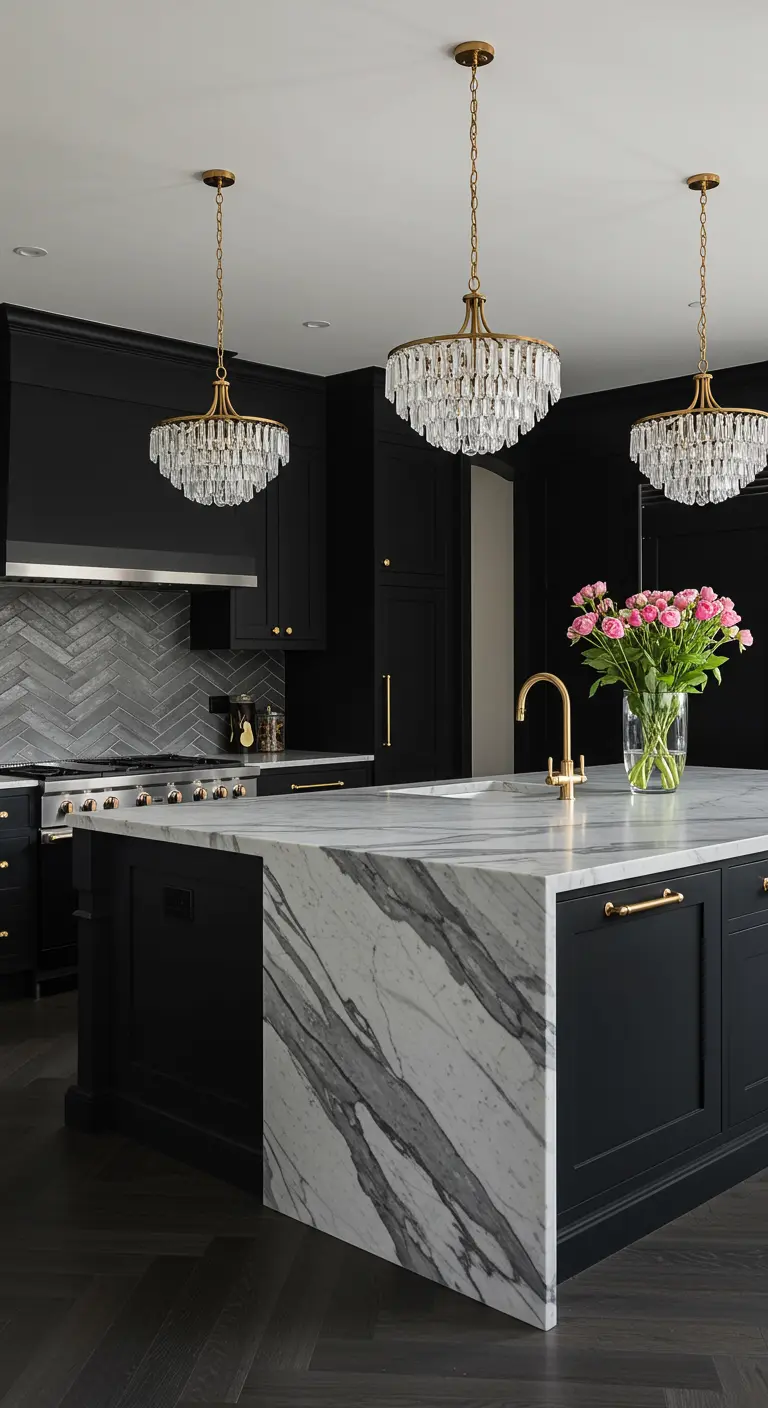
Elevate your kitchen from industrial to opulent by pairing moody ebony cabinets with dramatic, high-end materials.
A waterfall island made from boldly veined marble becomes the undeniable centerpiece of the room, turning a functional element into a piece of art.
Crystal chandeliers, rather than industrial pendants, add a touch of unexpected glamour and reflect light beautifully, preventing the dark palette from feeling heavy.
For a more accessible version, use the same dramatic marble for your backsplash and choose a single, stunning light fixture.
4. Embrace Rugged Texture with Natural Stone
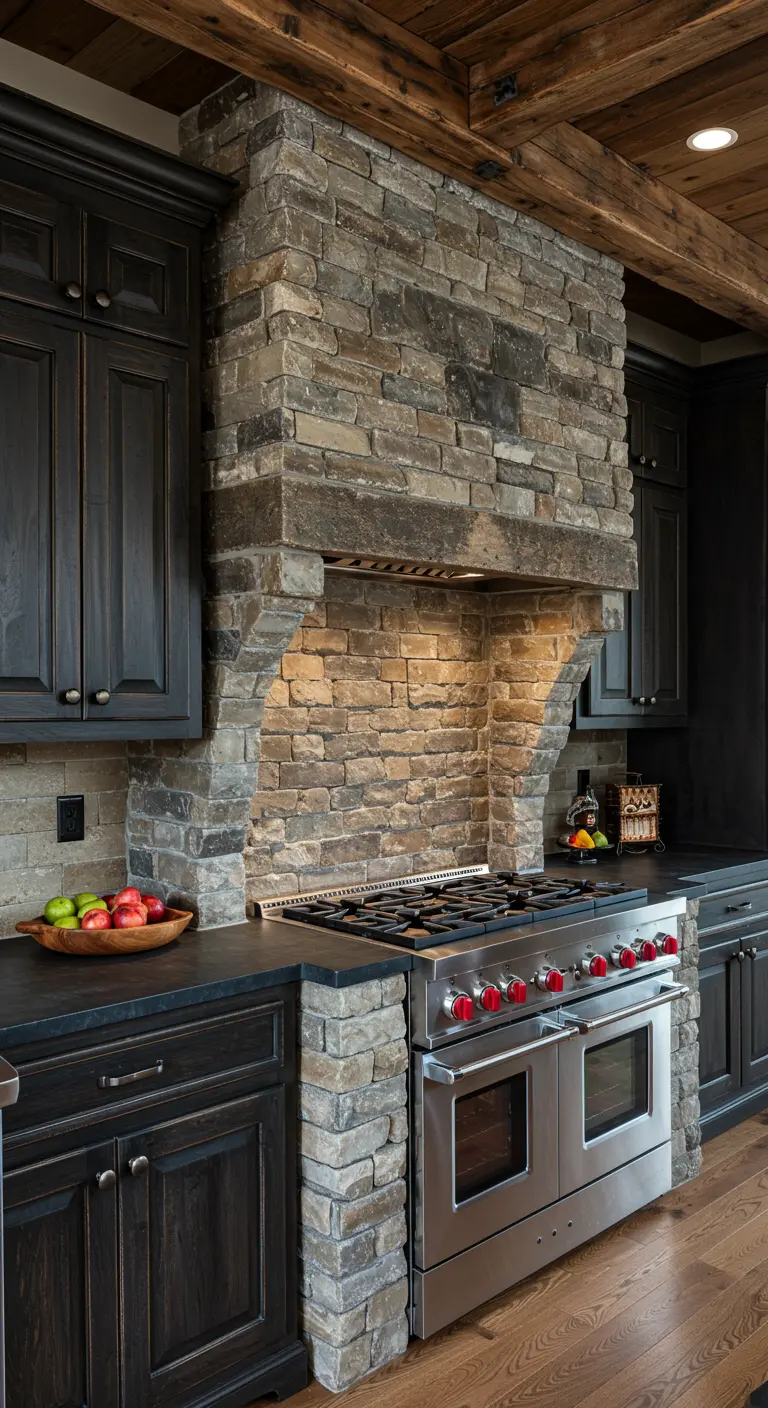
For a look that leans more rustic than industrial, swap classic brick for rough-hewn, stacked stone.
Creating a full stone alcove for the range creates an incredible focal point that feels rooted and substantial, reminiscent of an old-world hearth.
To keep it from overwhelming the space, pair it with simple, dark-stained shaker cabinets and matte black countertops.
This allows the stone’s natural variation in color and texture to be the star, creating a warm, rustic atmosphere.
5. Define Minimalism with a Metallic Grid
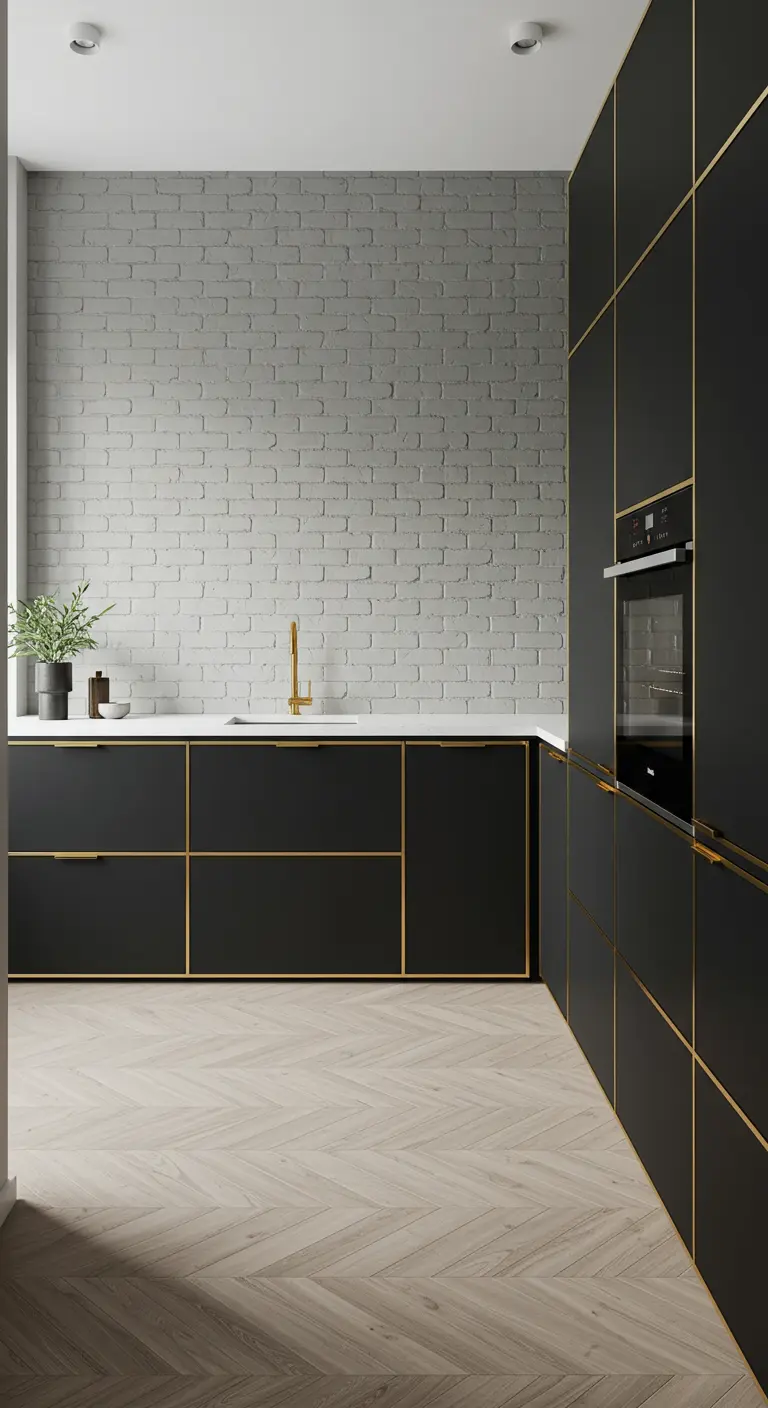
Give sleek, flat-front cabinets a dose of graphic sophistication with brass or gold channel detailing.
This technique creates a grid-like pattern that breaks up the solid black surfaces, adding rhythm and a touch of warmth without traditional hardware.
Pair this look with a muted, painted brick wall in a cool gray to provide textural contrast that doesn’t compete with the sharp, clean lines.
This is a perfect example of how minimalist interiors can still be rich in detail.
6. Create Depth with Monochromatic Sheen

A monochromatic black kitchen feels anything but flat when you play with different finishes.
Here, matte black cabinets are set against a glossy black brick backsplash, creating a subtle yet impactful contrast.
The gloss reflects the under-cabinet lighting, highlighting the brick’s shape and texture, while the matte finish absorbs light for a soft, velvety look.
This technique adds visual depth and sophistication, proving that a single color can be incredibly dynamic.
7. Style Open Shelving as a Personal Gallery
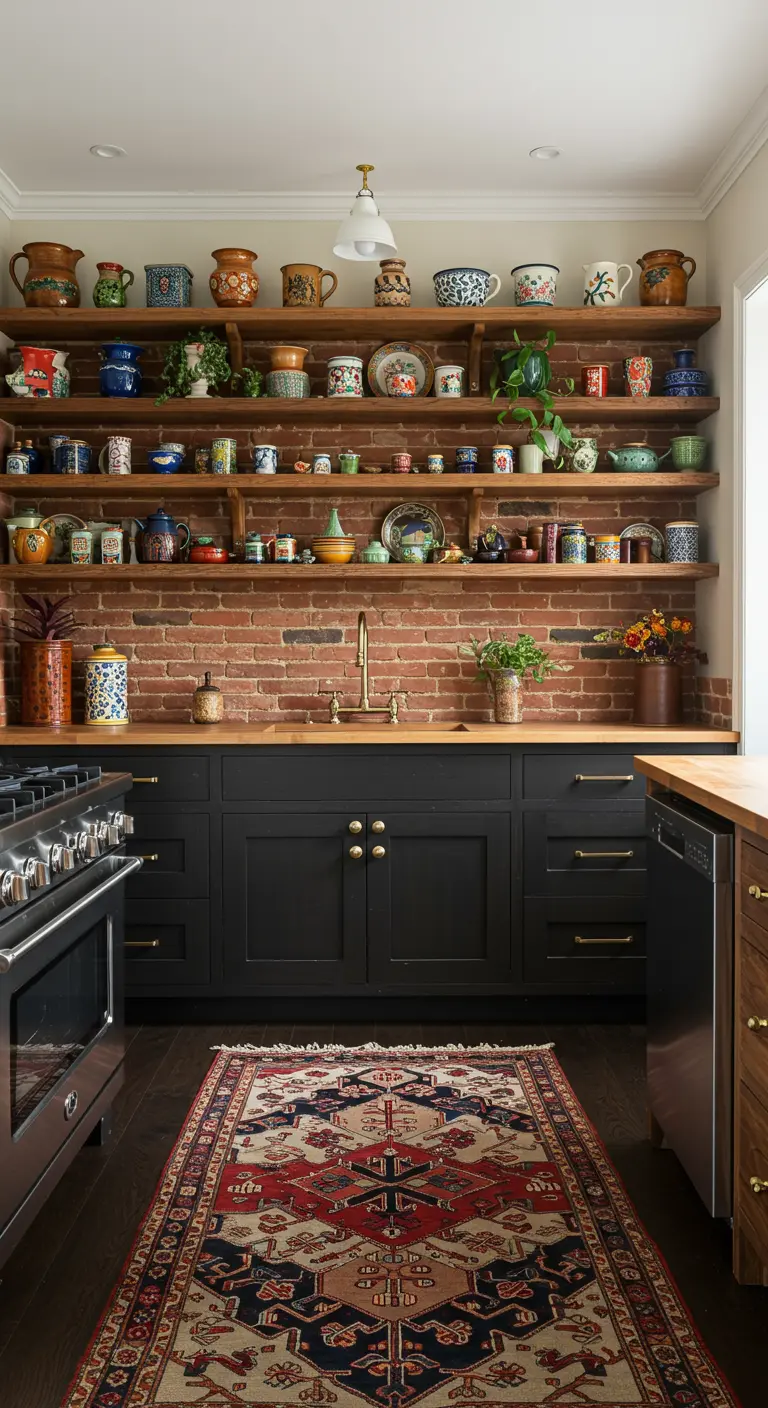
Use a brick wall as a warm, textural canvas for beautifully curated open shelving.
Instead of hiding everything away, display a collection of pottery, ceramics, or dishware that brings in color and personality.
The key to avoiding clutter is cohesion: group items by color, style, or function, and leave some breathing room on each shelf.
A warm wood countertop ties the shelving to the base cabinets, and a patterned rug adds another layer of eclectic charm.
8. Marry Mid-Century Lighting with Brick
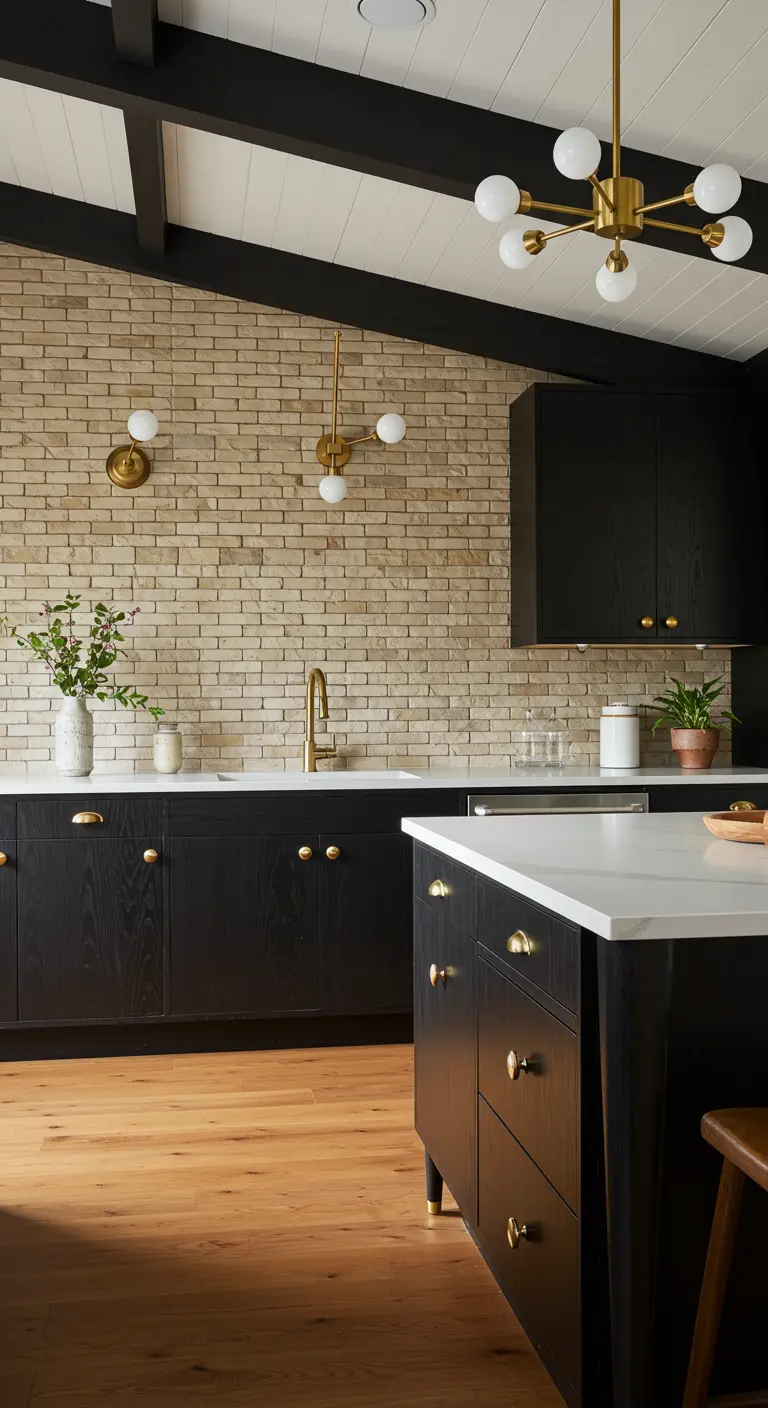
Bridge the gap between industrial and retro by incorporating Mid-Century Modern lighting.
A sputnik-style chandelier and matching globe sconces introduce a sculptural, almost playful element that contrasts with the rustic texture of the sandy-colored brick.
This unexpected pairing feels fresh and intentional, showing how you can mix design eras with confidence.
The flat-panel ebony cabinets with simple brass knobs provide a clean, modern foundation that allows these statement fixtures to shine.
9. Brighten Up with Two-Tone Cabinetry

If you’re hesitant to commit to an all-black kitchen, a two-tone approach is an elegant solution.
Using white for the upper cabinets keeps the space feeling open and light, while grounding the room with dark ebony base cabinets adds depth and drama.
Unify the two distinct halves with consistent hardware—in this case, warm brass pulls—and a backsplash that mediates between them, like this textured white tile.
The woven rattan pendant light adds a touch of coastal boho texture, softening the entire look.
10. Amplify Drama with Veined Stone
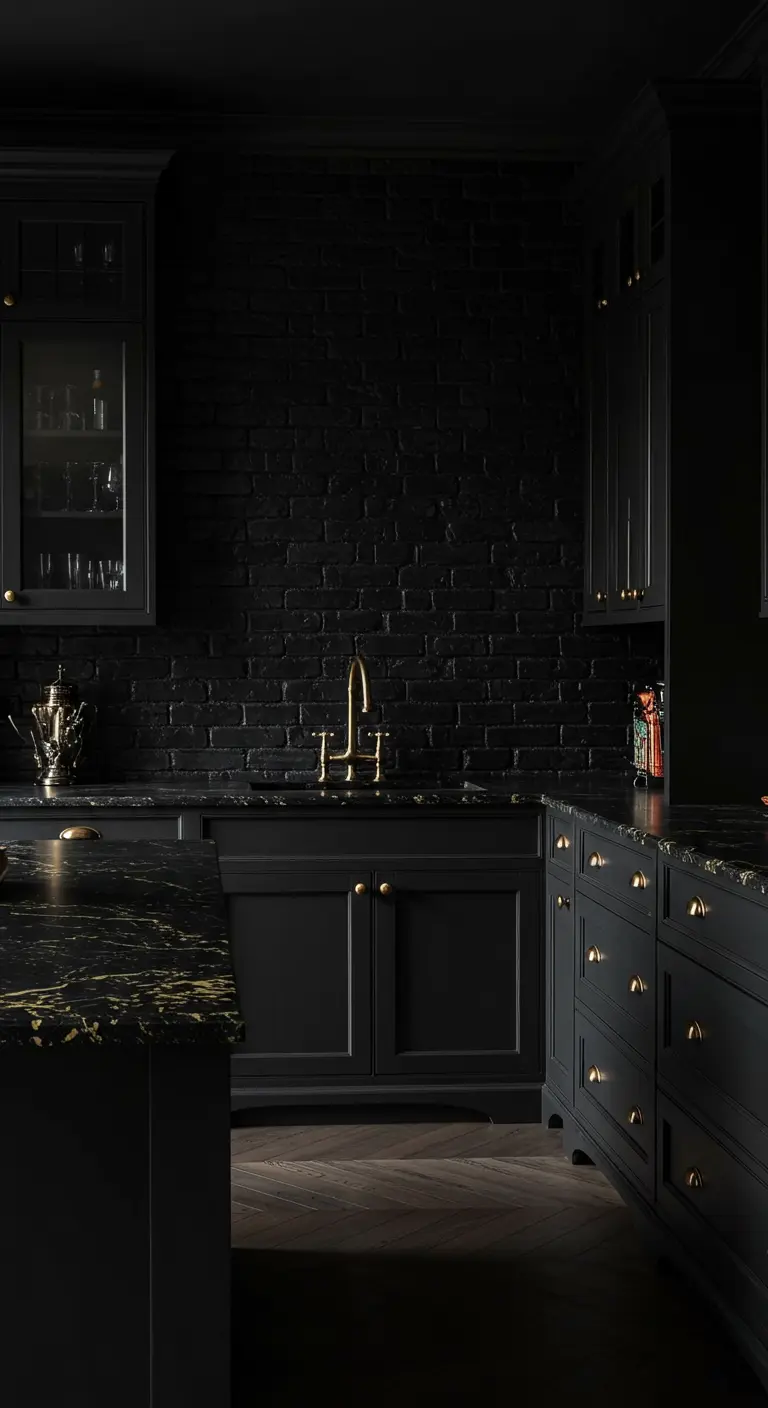
In a dark, moody kitchen, let your countertops do the talking.
Choosing a black stone with dramatic gold or white veining introduces movement and a touch of organic pattern into an otherwise solid, monochromatic space.
The veining catches the light and draws the eye, preventing the all-black scheme from feeling static.
It’s a powerful way to add character while maintaining a cohesive and dramatic aesthetic.
11. Warm Up Dark Brick with Natural Wood
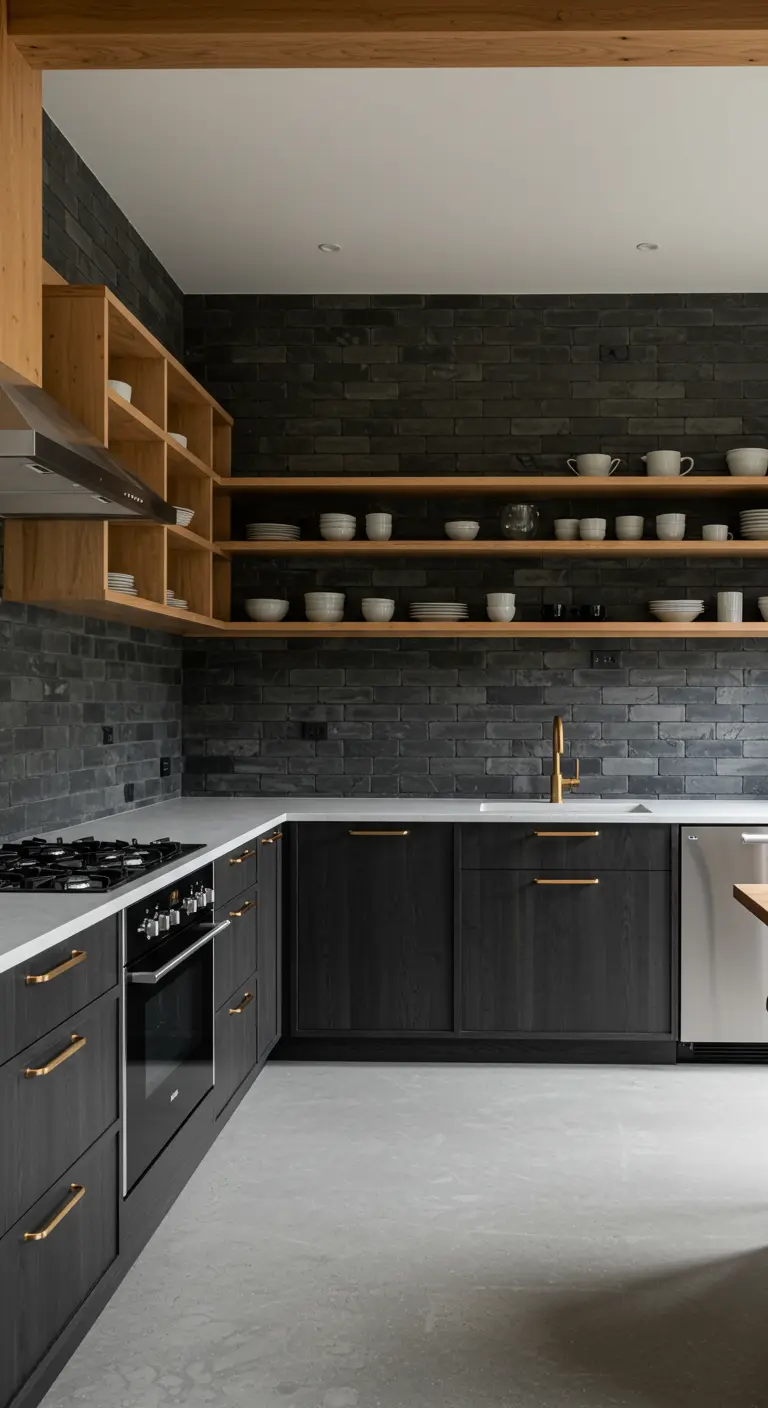
A dark charcoal or black brick wall can feel imposing, but pairing it with warm wood tones creates a balanced and inviting atmosphere.
Simple, clean-lined open shelving in a light natural oak provides a necessary contrast, lightening the visual load of the dark brick and cabinetry.
This combination feels both modern and organic, blending industrial toughness with the softness of nature.
The concrete floor provides a neutral, cool-toned base that allows the warm wood and dark brick to stand out, a hallmark of Japandi style.
12. Create a Hearth-Inspired Focal Point
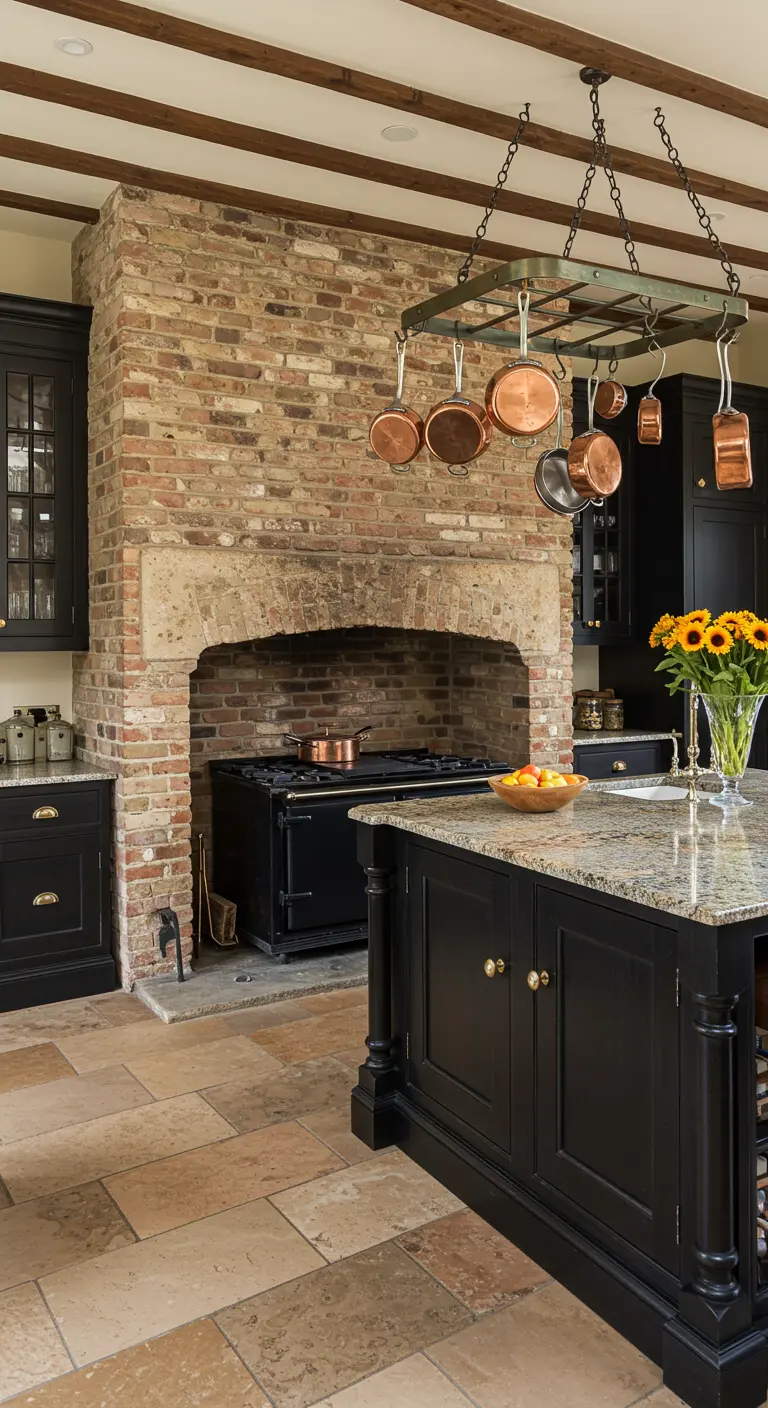
Evoke the feeling of a rustic country kitchen by using brick to create a substantial hearth-like structure around your range.
This architectural feature makes the cooking area the undeniable heart of the home.
A hanging pot rack above the island is not only practical but also enhances the rustic, utilitarian charm.
Pair these strong elements with classic black cabinets and warm stone floor tiles for a timeless look that feels like it has always been there.
13. Define Your Style with Statement Hardware

Never underestimate the transformative power of hardware.
Here, fan-shaped brass pulls lend a distinct Art Deco flair to simple shaker-style cabinets, instantly elevating the entire kitchen.
This single choice informs the room’s glamorous, vintage-inspired personality, which is further reinforced by the bold, geometric floor tile.
If you’re looking for a low-effort, high-impact update, swapping your hardware is the most effective change you can make, instantly adding a touch of Art Deco glam.
14. Highlight Texture with Directional Lighting
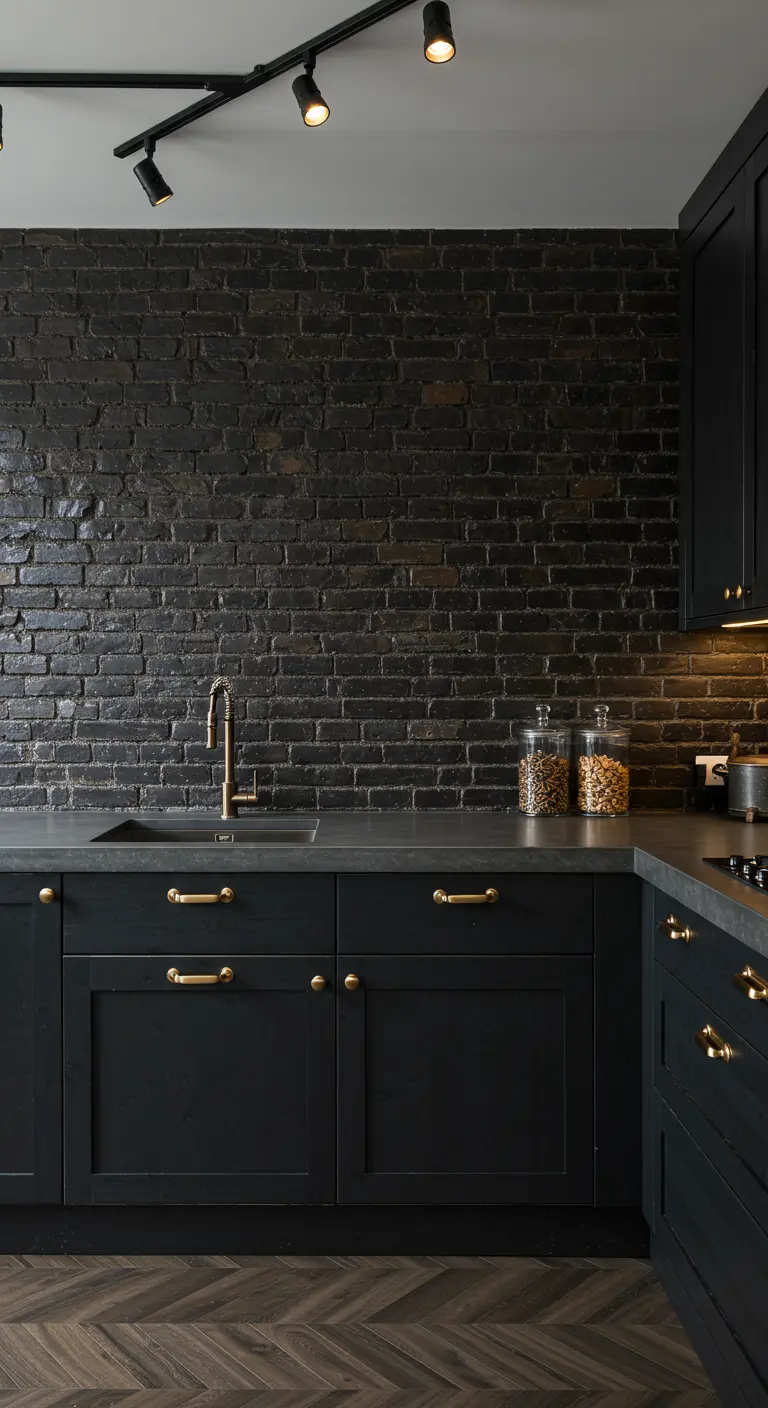
When your main feature is a highly textured wall, your lighting plan is paramount.
Instead of diffuse, ambient light, use directional track lighting to “graze” the brick surface.
This technique casts small shadows across the rough texture, accentuating its depth and irregularities for a dramatic, tactile effect.
It turns a simple brick wall into a dynamic feature that changes depending on the angle of the light.
15. Blur the Lines Between Indoors and Out
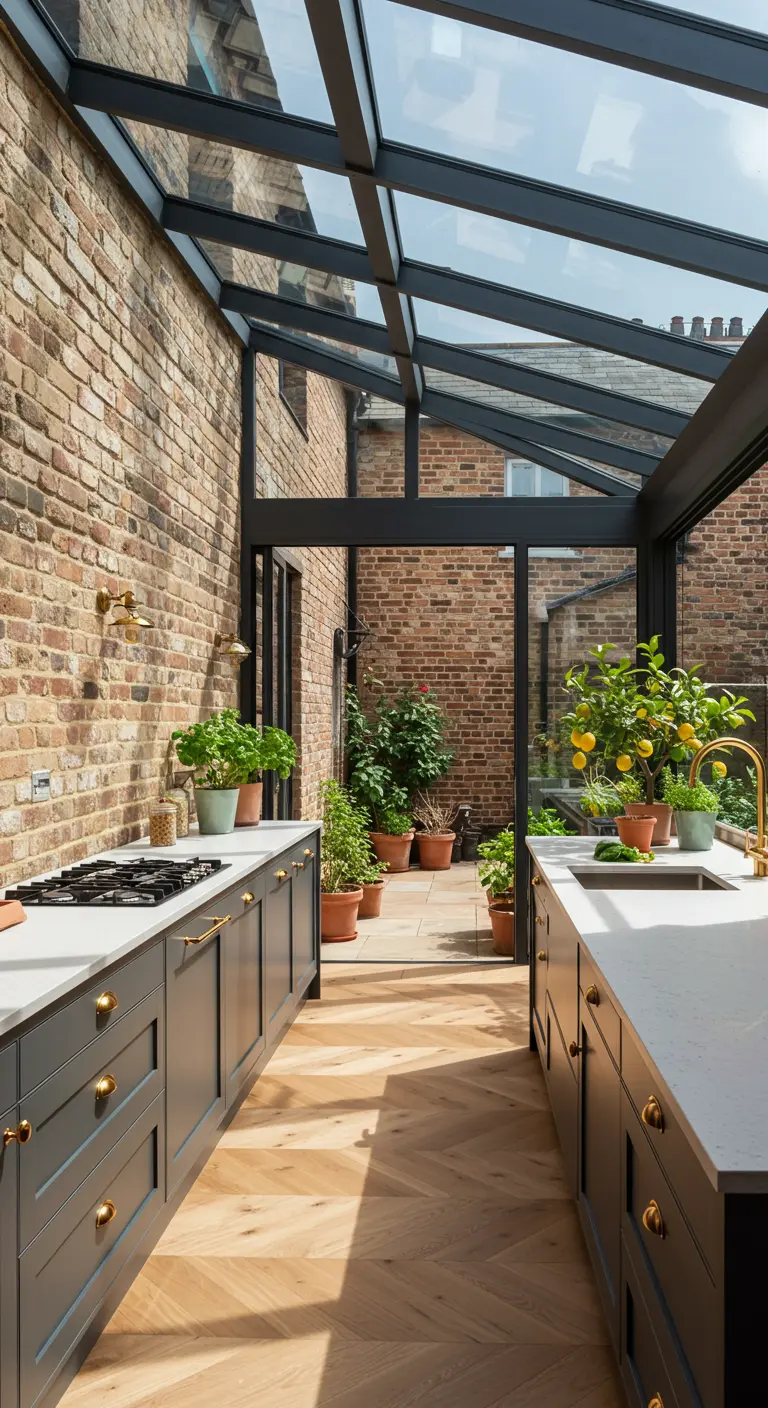
In a kitchen that opens to an outdoor space, use materials to create a seamless transition.
Running the same brick wall from the kitchen into the patio visually connects the two areas, making the interior feel larger and more integrated with nature.
A glass ceiling floods the space with natural light, while plentiful potted plants further dissolve the boundary between inside and out, creating a true urban jungle.
16. Make a Single Wall the Hero
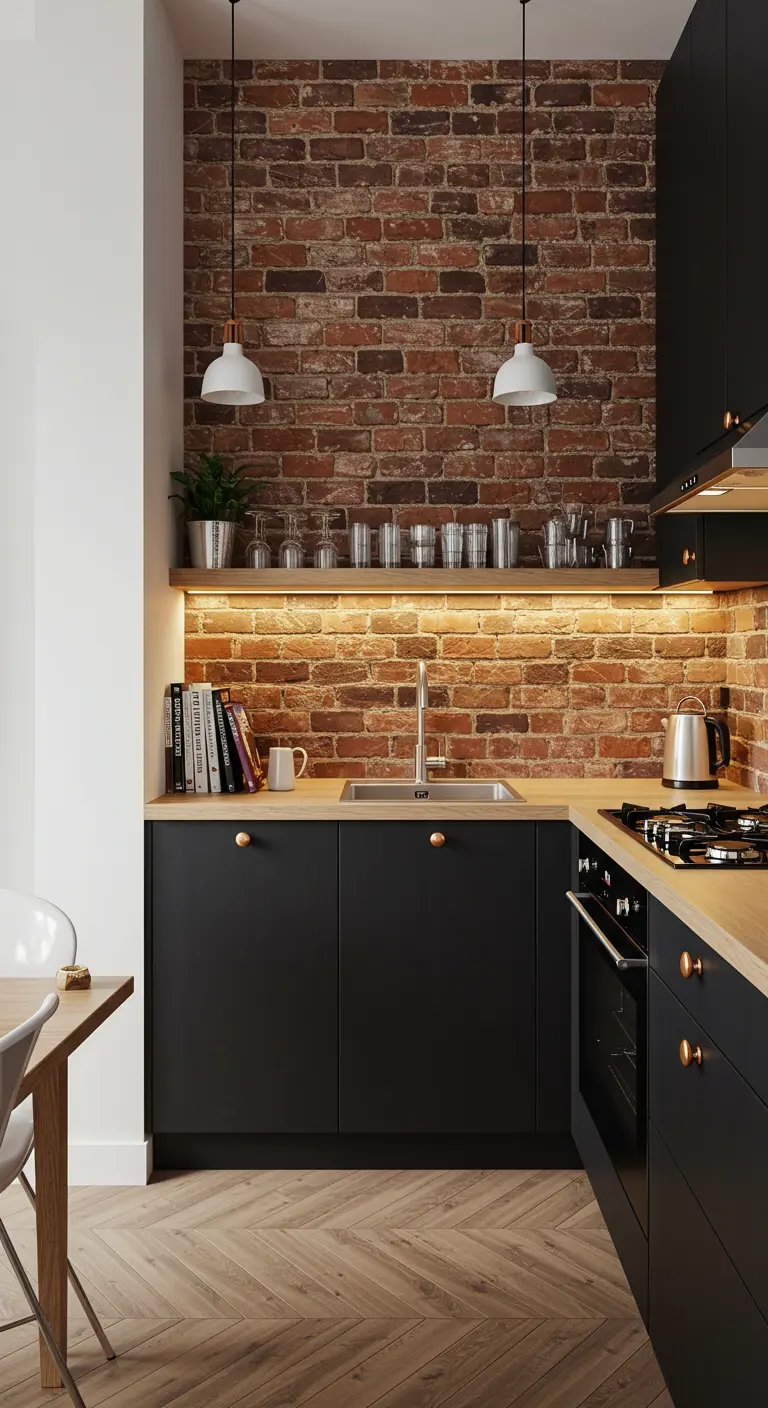
In a smaller kitchen, a full brick treatment can feel overwhelming.
Instead, create a single accent wall to serve as a powerful focal point without visually shrinking the space.
Here, a rugged red brick wall adds immense character and warmth to a compact layout.
Warm under-shelf lighting is essential; it not only provides task lighting but also highlights the brick’s texture, making the space feel more intentional and inviting.
17. Turn Structural Elements into Features

Don’t fight your home’s architecture—celebrate it.
If you have a structural column in an open-plan space, treat it as a design opportunity instead of an obstacle.
Wrapping it in brick that matches an accent wall elsewhere transforms it from a necessary eyesore into a deliberate, handsome feature that helps define the kitchen zone.
It adds texture and an industrial-chic anchor to the open layout.
18. Introduce Curves with an Archway

Soften the hard lines of cabinetry and countertops by introducing an elegant arch.
A brick archway creates a beautiful, traditional frame, turning the view into the next room into a thoughtful vignette.
This design move adds a sense of history and architectural gravity, perfectly complementing the ornate, Gothic-inspired black cabinets.
For a simpler take, an arched doorway or even a large arched mirror can bring a similar softness and grace to your space.
19. Opt for a Softer Contrast
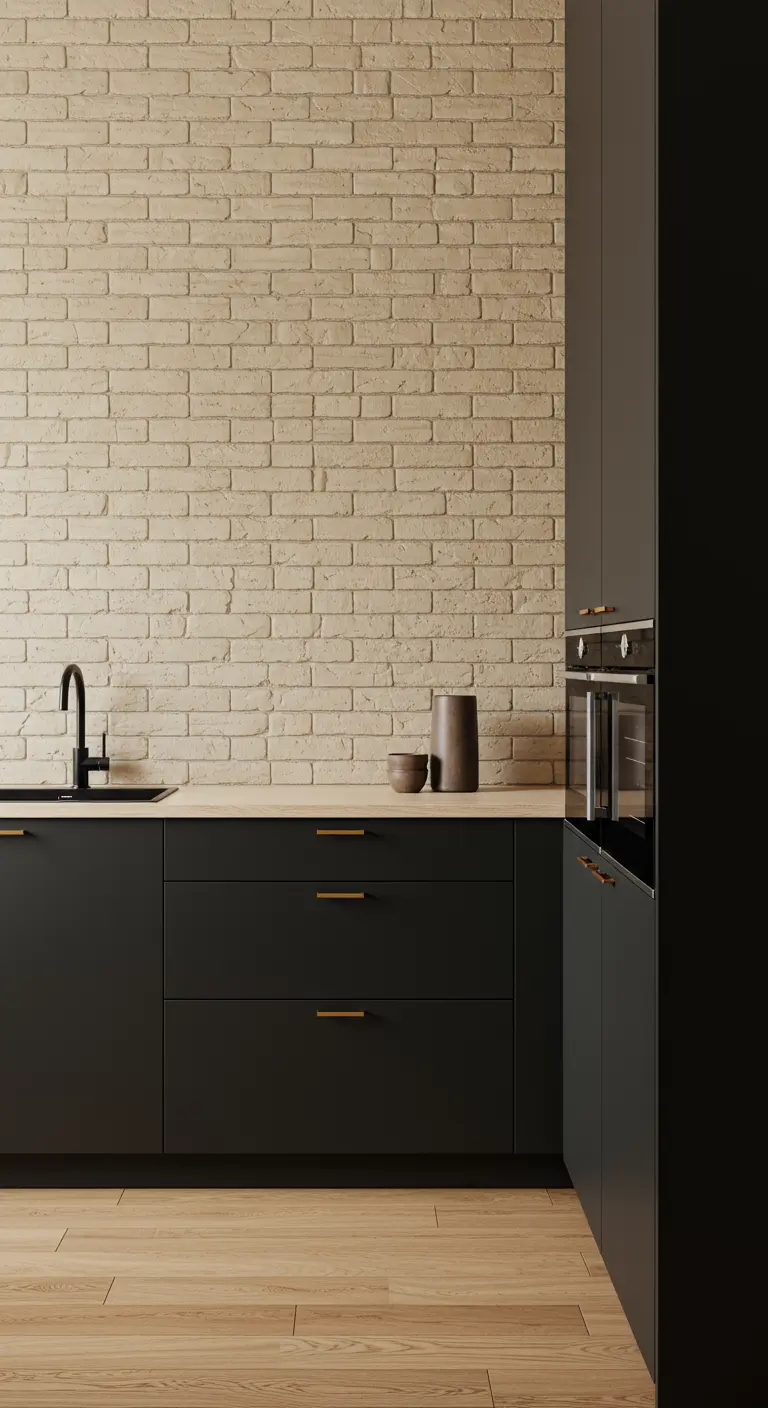
A high-contrast kitchen doesn’t have to be black and white.
For a warmer, gentler look, pair ebony cabinets with a soft, sand-colored brick.
This combination provides beautiful contrast while maintaining an earthy, natural feel. The light brick brightens the space and highlights the rich depth of the cabinets.
Pair with a light wood countertop to complete the cohesive, warm, and organic palette.
20. Layer Your Lighting for Function and Mood
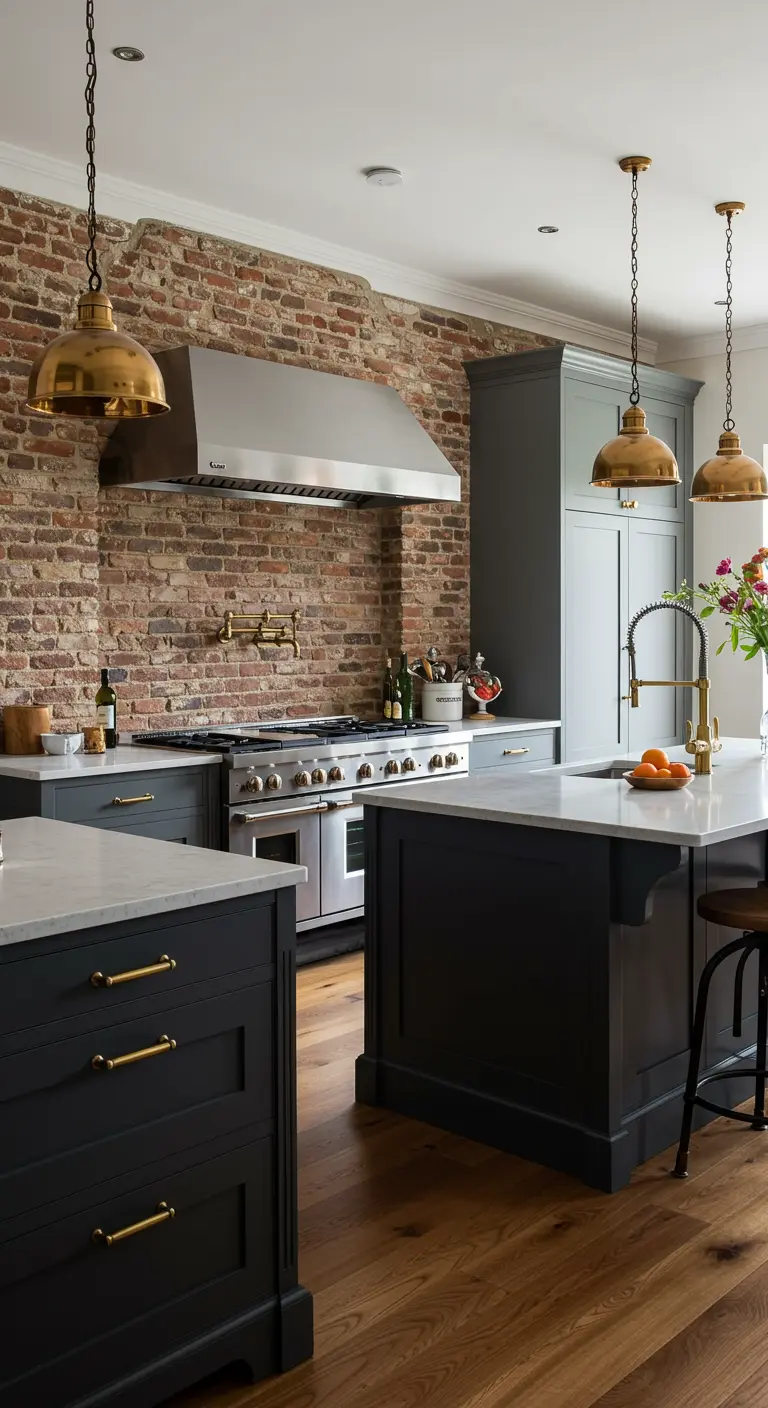
A beautiful kitchen must also be a functional one, and that starts with layered lighting.
Combine ambient, task, and accent lighting for a space that works for every need.
Here, brass pendants provide focused light over the islands for prep work, while a wall-mounted pot filler light illuminates the stove area.
This multi-source approach ensures every zone is well-lit, creating a kitchen that is as practical as it is beautiful.
